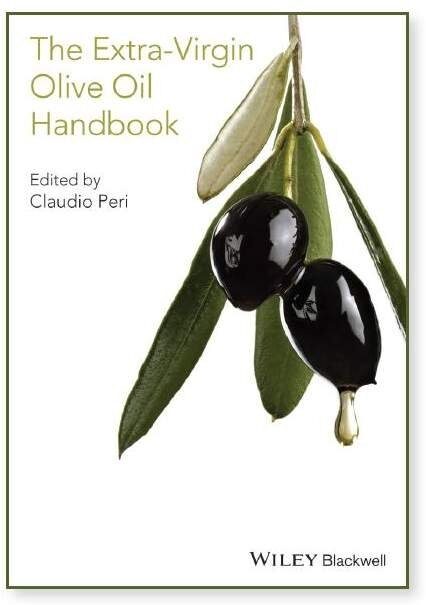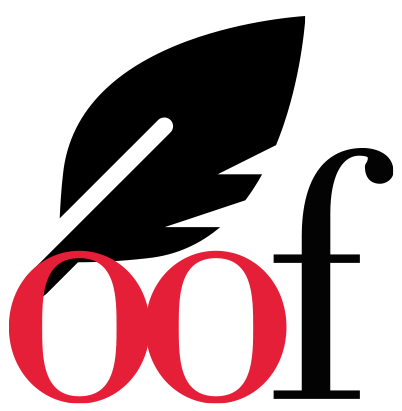Un’opera corale
La cultura dell’olio in un libro: The Extra-Virgin Olive Oil Handbook. E’ stato editato da poche settimane ed è un importante volume in lingua inglese che ruota intorno al professor Claudio Peri

E’ uscito da poco il volume The Extra-Virgin Olive Oil Handbook, editore Wiley & Blackwell (UK) – edito da Claudio Peri. Vi ho collaborato ad alcuni capitoli e ho piacere di proporlo ai lettori di Olio Officina Magazine. Secondo il professor Claudio Peri, uno degli studiosi più conosciuti a livello internazionale nel settore della qualità e della tecnologia degli alimenti, si tratta del più completo trattato in lingua inglese riguardante l’olio di oliva e il processo di produzione dalla raccolta delle olive fino all’uso nelle preparazioni culinarie nella ristorazione e nelle famiglie. Il volume contribuisce a identificare l’Italia quale depositaria della cultura di questo straordinario prodotto. Di seguito il flier predisposto da Wiley & Blackwell e l’indice dei contenuti del libro. (Primo Proietti)
Claudio Peri (Editor)
Hardcover | ISBN 978-1-118-46045-0 | 384 pages
$199.95 | £130.00 | €169.00
According to European legislation, extra virgin is the top grade of olive oils. It has a superior level of health properties and flavour compared to virgin and refined olive oils. Mediterranean countries still produce more than 85% of olive oil globally, but the constant increase of demand for extra virgin olive oil has led to new cultivation and production in other areas of the world, including California, Australia, China, South Africa and South America. At the same time, olive oil’s sensory properties and health benefits are increasingly attracting the attention and interest of nutritionists, food processors, manufacturers and food services. Progress and innovation in olive cultivation, harvesting and milling technologies as well as in oil handling, storage and selling conditions make it possible to achieve even higher quality levels than those stipulated for extra virgin oils. As a consequence, a new segment – excellent extra virgin olive oils – is increasingly attracting the attention of the market and earning consumers’ preference.
The Extra Virgin Olive Oil Handbook provides a complete accountof olive oil’s composition, health properties, quality, and the legal standards surrounding its production. The book is divided into convenient sections focusing on extra virgin olive oil as a product, the process by which it is made, and the process control system through which its quality is assured. An appendix presents a series of tables and graphs with useful data, including conversion factors, and the chemical and physical characteristics of olive oil.
This book is aimed at people involved in the industrial production as well as in the marketing and use of extra virgin olive oil who are looking for practical information, which avoids overly academic language, but which is still scientifically and technically sound. The main purpose of the handbook is to guide operators involved in the extra virgin olive oil chain in making the most appropriate decisions about product quality and operating conditions in the production and distribution processes. To these groups, the most important questions are practical ones of why, how, how often, how much will it cost, and so on. The Extra Virgin Olive Oil Handbook will provide the right answers to these key practical considerations, in a simple, clear yet precise and up-to-date way.
Learn more at www.wiley.com/go/extravirginoliveoil
Contents
List of Contributors xi
Acknowledgements xiii
Introduction 1
Part I The product 3
1 The extra-virgin olive oil chain 5
Claudio Peri
1.1 The legal classification and denomination of olive oils 5
1.2 The subject of this handbook 7
1.3 The extra-virgin olive oil chain 7
1.4 Yield and quality 8
Reference 10
2 Virgin olive oil: definition and standards 11
Manuela Mariotti
2.1 The legal definition of virgin olive oil 11
2.2 Quality standards of virgin olive oil 12
2.3 Authenticity standards of virgin olive oil 19
Reference 19
3 The composition and nutritional properties
of extra-virgin olive oil 21
Manuela Mariotti and Claudio Peri
3.1 Triglycerides and fatty acids 21
3.2 The nutritional role of olive oil triglycerides and fatty acids 26
3.3 Minor components and antioxidants in extra-virgin olive oil 28
3.4 The colour and odour components of extra-virgin olive oil 31
3.5 Conclusion 32
References 33
vi CONTENTS
4 The sensory quality of extra-virgin olive oil 35
Mario Bertuccioli and Erminio Monteleone
4.1 Introduction 35
4.2 The official evaluation of defects and positive
sensory attributes 36
4.3 The sensory profile 41
4.4 Sensory performance of extra-virgin olive oil-food pairing 49
Annex 4.1: The method for evaluating extra-virgin olive
oil sensory profiles 53
References 56
5 Olive tree cultivars 59
Luana Ilarioni and Primo Proietti
5.1 Introduction 59
5.2 Cultivars 59
5.3 The cultivar’s relationship to productivity 60
5.4 The cultivar’s relationship to oil quality 64
5.5 Common-sense recommendations 65
References 67
6 The role of oxygen and water in the extra-virgin
olive oil process 69
Bruno Zanoni
6.1 The conflicting roles of oxygen 69
6.2 The role of water in the transformation of phenolic compounds 71
References 74
Further reading 74
7 Extra-virgin olive oil contaminants 75
Cristina Alamprese
7.1 Introduction 75
7.2 Contaminants of virgin olive oil 78
References 84
Part II The process 87
8 Olive harvesting 89
Luigi Nasini and Primo Proietti
8.1 Introduction 89
8.2 Olive ripening 90
8.3 Harvesting systems 91
Annex 8.1: Methods for olive maturity assessment 101
References 105
CONTENTS vii
9 Olive handling, storage and transportation 107
Primo Proietti
9.1 The autocatalytic nature of olives and oil degradation 107
9.2 Avoid mechanical damage to the olives 107
9.3 Control the time-temperature relationship 109
9.4 Management of the harvesting-milling link 112
References 112
10 Olive cleaning 113
Claudio Peri
10.1 Introduction 113
10.2 The separation section 113
10.3 The washing section 114
10.4 Control points 115
11 Olive milling and pitting 117
Alessandro Leone
11.1 Introduction 117
11.2 Milling machines 119
11.3 Pitting machines 124
References 126
12 Olive paste malaxation 127
Antonia Tamborrino
12.1 Basic phenomena in malaxation 127
12.2 Malaxers 132
References 136
13 Centrifugal separation 139
Lamberto Baccioni and Claudio Peri
13.1 Introduction 139
13.2 The three-phase process 140
13.3 The two-phase process 142
13.4 Decanters 142
13.5 Disc centrifuges 148
13.6 Final comments and remarks 151
Further reading 153
14 Filtration of extra-virgin olive oil 155
Claudio Peri
14.1 Introduction 155
14.2 Filtration principles 156
14.3 The filter media 159
14.4 Filtration equipment 159
viii CONTENTS
14.5 Filtration systems 160
14.6 Conclusion 164
Further reading 164
15 Extra-virgin olive oil storage and handling 165
Claudio Peri
15.1 Introduction 165
15.2 Prevention of temperature abuse 166
15.3 Prevention of exposure to air (oxygen) 168
15.4 Prevention of exposure to light 170
15.5 Prevention of water and organic residues in the oil 171
15.6 Prevention of exposure to contaminated atmosphere
and poor hygienic standards 171
15.7 Prevention of mechanical stress 171
Annex 15.1: Pumps, tanks and piping 172
Reference 178
Further reading 178
16 Extra-virgin olive oil packaging 179
Sara Limbo, Claudio Peri and Luciano Piergiovanni
16.1 Introduction 179
16.2 The packaging process 181
16.3 The packaging materials 185
16.4 The packaging operation 189
References 198
Further reading 199
17 The olive oil refining process 201
Claudio Peri
17.1 Introduction 201
17.2 The process of extraction of crude pomace oil 202
17.3 The refining process 205
17.4 The physical refining process 208
17.5 The quality and uses of refined olive oil 208
Reference 210
Further reading 210
Part III The process control system 211
18 Process management system (PMS) 213
Claudio Peri
18.1 Introduction 213
18.2 The structure of a PMS 214
18.3 Control of critical points 220
18.4 Risk analysis: a blanket rule for management decisions 224
CONTENTS ix
Annex 18.1: Excellence in extra-virgin olive oil 226
Annex 18.2: An exercise of integrated risk analysis applied to the
process of extra-virgin olive oil 230
References 243
Further reading 243
19 Extra-virgin olive oil traceability 245
Bruno Zanoni
19.1 Introduction 245
19.2 Four basic steps 246
19.3 Comments and conclusion 249
References 249
Further reading 250
20 Product and process certification 251
Ardian Marjani
20.1 Aims and approaches 251
20.2 Product and process certification 253
20.3 The selection of a certification system 257
20.4 The certification procedure 260
Reference 261
Further reading 261
21 The hygiene of the olive oil factory 263
Cristina Alamprese and Bruno Zanoni
21.1 Introduction 263
21.2 Hygiene of the external environment and buildings 264
21.3 Hygiene of the plant 268
21.4 Hygiene of the personnel 269
21.5 Hygiene management system (HMS) and HACCP 270
Annex 21.1: Hygienic design 276
Reference 281
Further reading 282
22 Olive mill waste and by-products 283
Claudio Peri and Primo Proietti
22.1 Introduction 283
22.2 Composition, treatment and uses of olive mill wastewater 285
22.3 Composition, treatment and uses of olive mill pomace 291
Annex 22.1: Mass balance of the extra-virgin
olive oil process 296
Reference 302
Further reading 302
x CONTENTS
23 The production cost of extra-virgin olive oil 303
Enrico Bertolotti
23.1 Introduction 303
23.2 Concepts, terms and definitions 305
23.3 Hypotheses for the cost analysis 306
23.4 Cost calculation 308
23.5 Total cost 317
Further reading 318
24 The culinary uses of extra-virgin olive oil 321
Alan Tardi
24.1 A brief history of the olive 321
24.2 Old versus new: expanded culinary possibilities offered by excellent
extra-virgin olive oil 324
24.3 Excellent extra-virgin olive oil as a condiment, at the table
and in the kitchen 330
24.4 Putting excellent extra-virgin olive oils to work 332
24.5 Education and communication: revolutionizing the perception
of olive oil one drop at a time 335
References 337
25 An introduction to life-cycle assessment (LCA) 339
Stefano Rossi
25.1 Introduction 339
25.2 Methodological approach 340
25.3 Limits and advantages of the carbon footprint 342
25.4 Environmental communication strategies 343
25.5 The food sector 344
References 347
Appendix 349
Index 361
Per commentare gli articoli è necessario essere registrati
Se sei un utente registrato puoi accedere al tuo account cliccando qui
oppure puoi creare un nuovo account cliccando qui


Commenta la notizia
Devi essere connesso per inviare un commento.